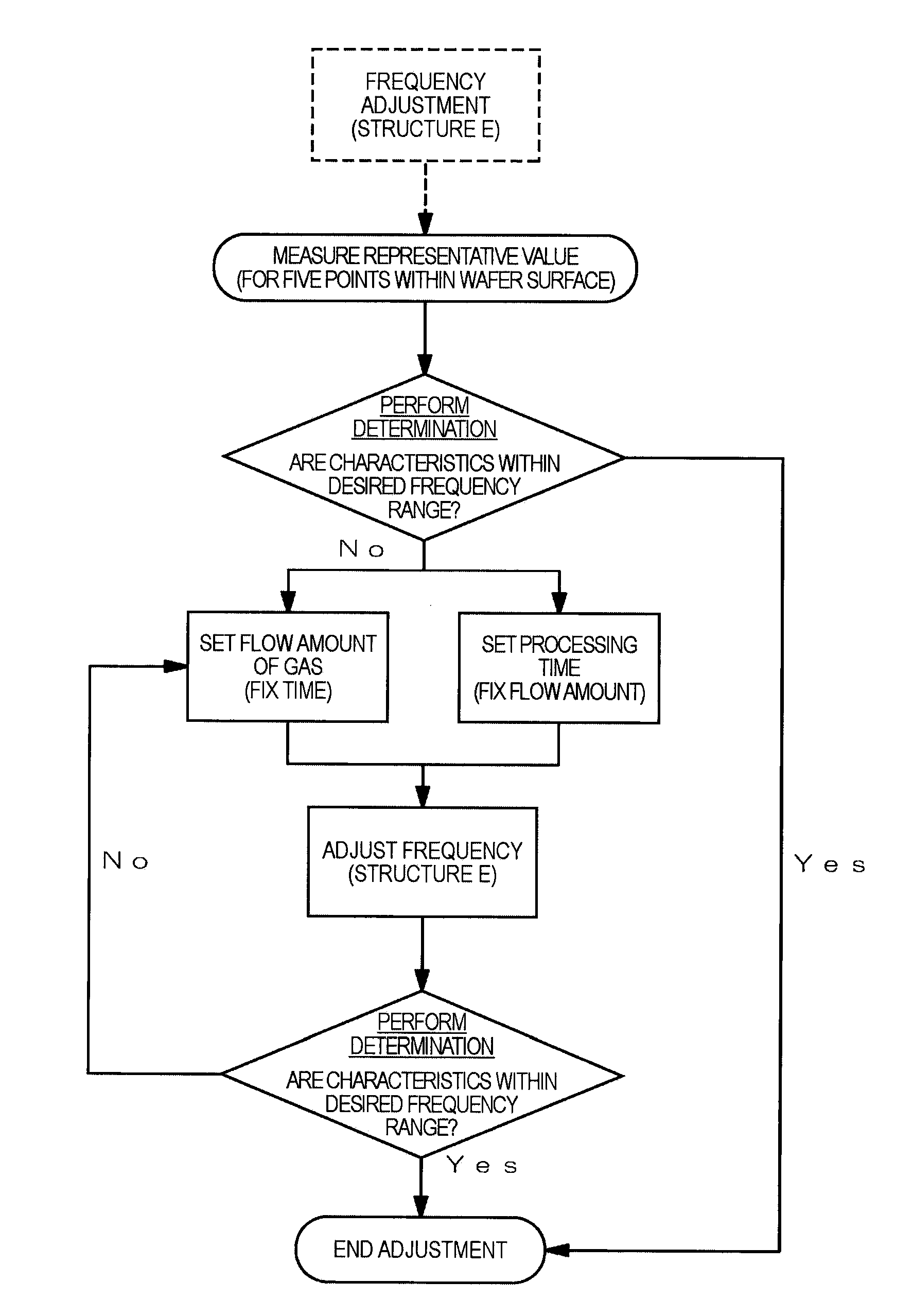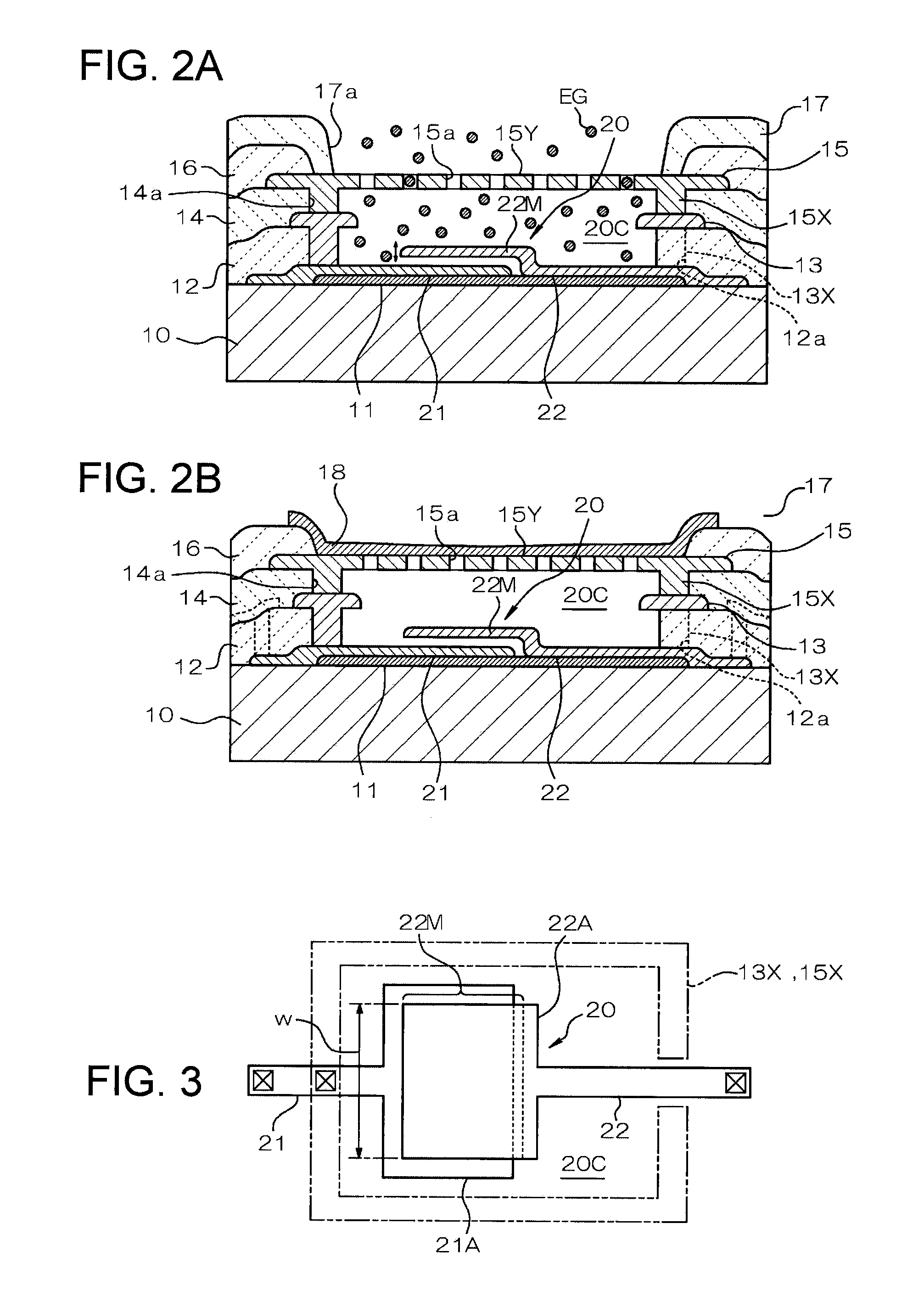Method of manufacturing MEMS device
a manufacturing method and technology of a mems device, applied in the direction of impedence network, electrical apparatus, testing/measurement of semiconductor/solid-state devices, etc., can solve the problems of inability to adjust, limited range in which the operating frequency can be changed, and deviation in operation characteristics, so as to achieve accurate control of etching state, improve uniformity of surface etching for the movable portion, and improve the effect of operation characteristics
- Summary
- Abstract
- Description
- Claims
- Application Information
AI Technical Summary
Benefits of technology
Problems solved by technology
Method used
Image
Examples
Embodiment Construction
[0041]Next, exemplary embodiments of the invention will be described with reference to the accompanying drawings. First, a method of manufacturing an MEMS device according to an embodiment of the invention will be described with reference to FIGS. 1A to 1C and FIGS. 2A and 2B. FIGS. 1A to 1C and FIGS. 2A and 2B are schematic cross-sectional views showing each process of the method of manufacturing the MEMS device according to this embodiment.
[0042]As shown in FIG. 1A, in this embodiment, an MEMS device is manufactured which is configured by using a substrate (wafer) 10 formed of a semiconductor such as a single crystalline silicon as a base body and forming an MEMS structure 20 on the substrate 10. However, the substrate 10 is not limited to semiconductor and may be formed from various materials such as glass, ceramics, or resin.
[0043]On the surface of the substrate 10, an insulating film (not shown) made from silicon oxide or the like is formed as is necessary, and accordingly, ins...
PUM
 Login to View More
Login to View More Abstract
Description
Claims
Application Information
 Login to View More
Login to View More - R&D
- Intellectual Property
- Life Sciences
- Materials
- Tech Scout
- Unparalleled Data Quality
- Higher Quality Content
- 60% Fewer Hallucinations
Browse by: Latest US Patents, China's latest patents, Technical Efficacy Thesaurus, Application Domain, Technology Topic, Popular Technical Reports.
© 2025 PatSnap. All rights reserved.Legal|Privacy policy|Modern Slavery Act Transparency Statement|Sitemap|About US| Contact US: help@patsnap.com



